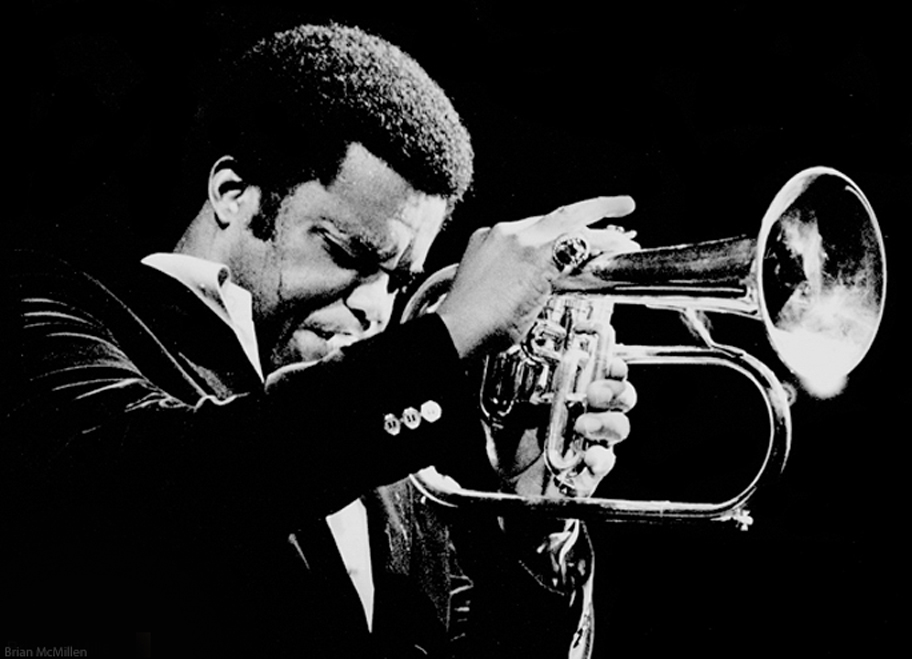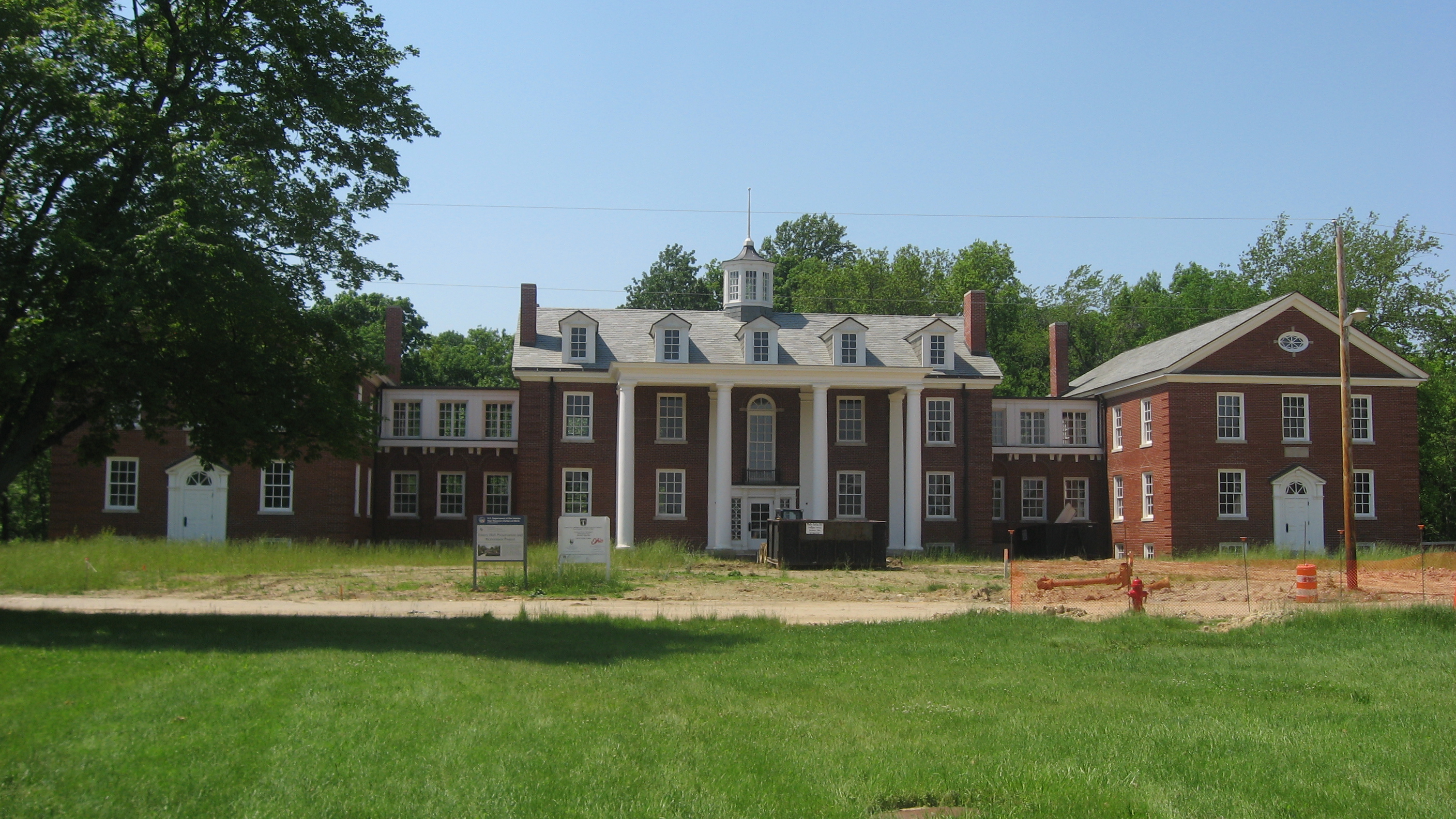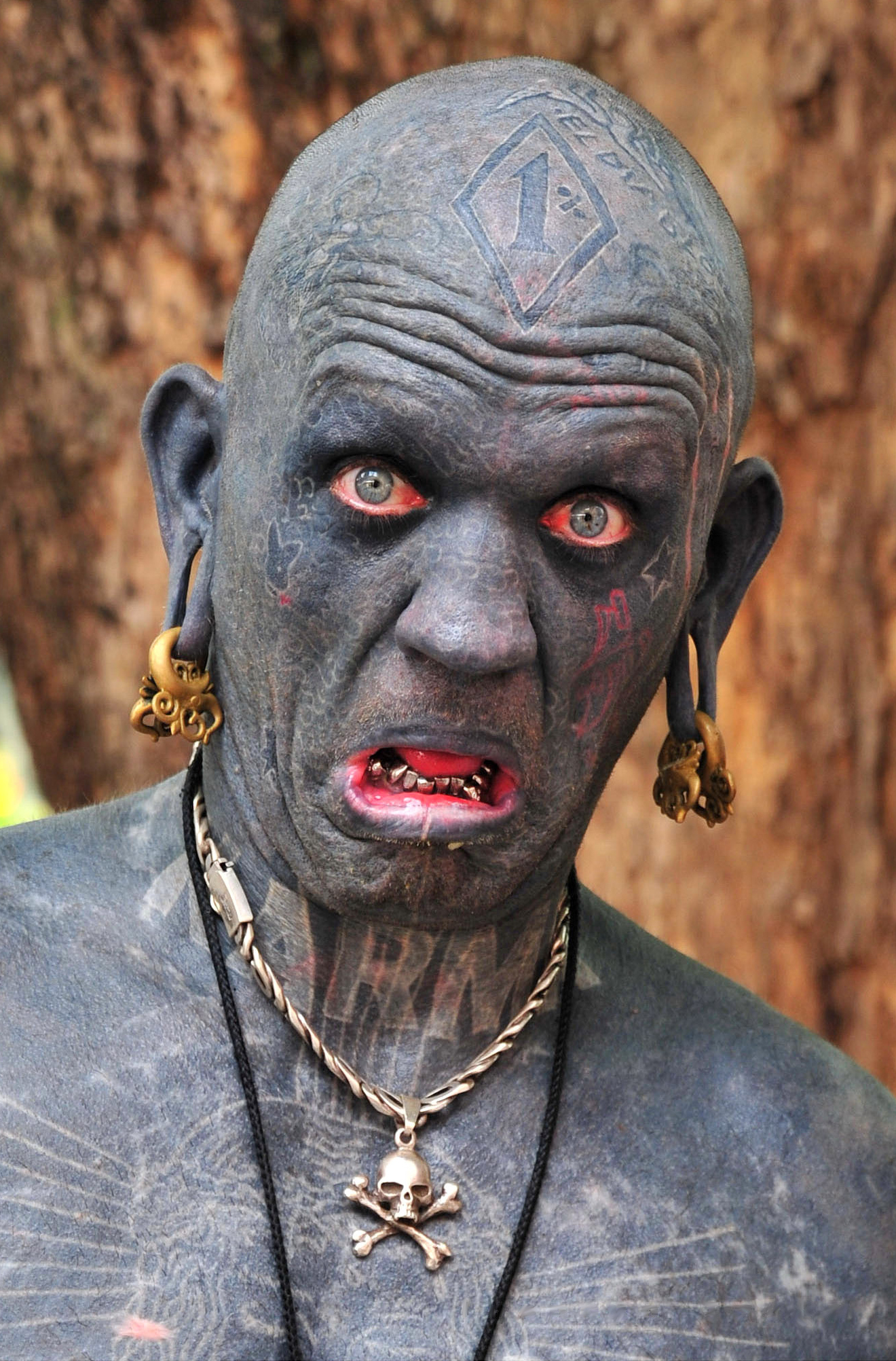|
Cecil McBee
Cecil McBee (born May 19, 1935) is an American jazz bassist. He has recorded as a leader only a handful of times since the 1970s, but has contributed as a sideman to a number of classic jazz albums. Biography Early life and career McBee was born in Tulsa, Oklahoma, United States. He studied clarinet at school, but switched to bass at the age of 17, and began playing in local nightclubs. After gaining a music degree from Ohio Central State University, McBee spent two years in the U.S. Army, during which time he conducted the band at Fort Knox. In 1959, he played with Dinah Washington, and in 1962 he moved to Detroit, Michigan, where he worked with Paul Winter's folk-rock ensemble between 1963 and 1964. New York His jazz career began to take off in the mid-1960s, after he moved to New York, when he began playing and recording with a number of significant musicians including Miles Davis, Andrew Hill, Sam Rivers, Jackie McLean (1964), Wayne Shorter (1965–66), Charles L ... [...More Info...] [...Related Items...] OR: [Wikipedia] [Google] [Baidu] |
Tulsa, Oklahoma
Tulsa ( ) is the List of municipalities in Oklahoma, second-most-populous city in the U.S. state, state of Oklahoma, after Oklahoma City, and the List of United States cities by population, 48th-most-populous city in the United States. The population was 413,066 as of the 2020 United States census, 2020 census. It is the principal municipality of the Tulsa Metropolitan Area, Tulsa metropolitan area, a region with 1,034,123 residents. The city serves as the county seat of Tulsa County, Oklahoma, Tulsa County, the most densely populated county in Oklahoma, with Urban Development, urban development extending into Osage County, Oklahoma, Osage, Rogers County, Oklahoma, Rogers and Wagoner County, Oklahoma, Wagoner counties. Tulsa was settled between 1828 and 1836 by the Lochapoka band of Creek people, Creek Native Americans, and was formally incorporated in 1898. Most of Tulsa is still part of the territory of the Muscogee (Creek) Nation. Northwest Tulsa lies in the Osage Nation wh ... [...More Info...] [...Related Items...] OR: [Wikipedia] [Google] [Baidu] |
Freddie Hubbard
Frederick Dewayne Hubbard (April 7, 1938 – December 29, 2008) was an American jazz trumpeter. He played bebop, hard bop, and post-bop styles from the early 1960s onwards. His unmistakable and influential tone contributed to new perspectives for modern jazz and bebop. Career beginnings Hubbard started playing the mellophone and trumpet in his school band at Arsenal Technical High School in Indianapolis, Indiana. Trumpeter Lee Katzman, former sideman with Stan Kenton, recommended that he begin taking trumpet lessons at the Arthur Jordan Conservatory of Music (now the Jordan College of the Arts at Butler University) with Max Woodbury, principal trumpeter of the Indianapolis Symphony Orchestra. In his teens, Hubbard worked locally with brothers Wes Montgomery, Wes and Monk Montgomery, and worked with bassist Larry Ridley and saxophonist James Spaulding. In 1958, at the age of 20, he moved to New York and began playing with some of the best jazz players of the era, including Philly ... [...More Info...] [...Related Items...] OR: [Wikipedia] [Google] [Baidu] |
Detroit
Detroit ( , ) is the List of municipalities in Michigan, most populous city in the U.S. state of Michigan. It is situated on the bank of the Detroit River across from Windsor, Ontario. It had a population of 639,111 at the 2020 United States census, 2020 census, making it the List of United States cities by population, 26th-most populous city in the United States and the largest U.S. city on the Canada–United States border. The Metro Detroit area, home to 4.3 million people, is the second-largest in the Midwestern United States, Midwest after the Chicago metropolitan area and the 14th-largest in the United States. The county seat, seat of Wayne County, Michigan, Wayne County, Detroit is a significant cultural center known for its contributions to music, art, architecture and design, in addition to its historical automotive and industrial background. In 1701, Kingdom of France, Royal French explorers Antoine de la Mothe Cadillac and Alphonse de Tonty founded Fort Pontc ... [...More Info...] [...Related Items...] OR: [Wikipedia] [Google] [Baidu] |
Fort Knox
Fort Knox is a United States Army installation in Kentucky, south of Louisville and north of Elizabethtown, Kentucky, Elizabethtown. It is adjacent to the United States Bullion Depository (also known as Fort Knox), which is used to house a large portion of the United States' official gold reserves, and with which it is often conflated. The base covers parts of Bullitt County, Kentucky, Bullitt, Hardin County, Kentucky, Hardin and Meade County, Kentucky, Meade counties. It currently holds the Army Human Resources Center of Excellence, including the Army Human Resources Command. It is named in honor of Henry Knox, Chief of Artillery in the American Revolutionary War and the first United States Secretary of War. For 60 years, Fort Knox was the home of the U.S. Army Armor Center and School, and was used by both the Army and the United States Marine Corps, Marine Corps to train crews on the American tanks of the day; the last was the M1 Abrams main battle tank. The history of the ... [...More Info...] [...Related Items...] OR: [Wikipedia] [Google] [Baidu] |
United States Army
The United States Army (USA) is the primary Land warfare, land service branch of the United States Department of Defense. It is designated as the Army of the United States in the United States Constitution.Article II, section 2, clause 1 of the United States Constitution (1789).See alsTitle 10, Subtitle B, Chapter 301, Section 3001 It operates under the authority, direction, and control of the United States Secretary of Defense, United States secretary of defense. It is one of the six armed forces and one of the eight uniformed services of the United States. The Army is the most senior branch in order of precedence amongst the armed services. It has its roots in the Continental Army, formed on 14 June 1775 to fight against the British for independence during the American Revolutionary War (1775–1783). After the Revolutionary War, the Congress of the Confederation created the United States Army on 3 June 1784 to replace the disbanded Continental Army.Library of CongressJournals ... [...More Info...] [...Related Items...] OR: [Wikipedia] [Google] [Baidu] |
Ohio Central State University
Central State University (CSU) is a public, historically black land-grant university in Wilberforce, Ohio, United States. It is a member-school of the Thurgood Marshall College Fund. Established by the state legislature in 1887 as a two-year program for teacher and industrial training, it was originally located with Wilberforce University, a four-year institution devoted to classical academic education. It was originally known as the Combined Normal and Industrial Department. In 1941 the college gained a four-year curriculum, independent status in 1947, and was renamed as Central State College in 1951. With further development, it gained university status in 1965. In 2014, Central State University received designation as a land-grant university. History Central State University started in 1887 as a two-year normal and industrial department funded by the state. [...More Info...] [...Related Items...] OR: [Wikipedia] [Google] [Baidu] |
Sideman
A sideman is a professional musician who is hired to perform live with a solo artist, or with a group in which they are not a regular band member. The term is usually used to describe musicians that play with jazz or rock artists, whether solo or a group. Sidemen and sidewomen are often well-versed in multiple styles of music, and can be hired at any level of the music industry, from playing in a cover band to backing up established artists on major tours. While many artists can work as sidemen or session musicians, others will only fill one role. The generally accepted difference is that a sideman performs live while a session musician is hired to perform in a recording studio. Career progression Aspiring musicians often start out as sidemen, playing rhythm guitar, comping on keyboards, playing drums in the rhythm section, or singing backing vocals for a well-known bandleader or singer. Once sidemen have become experienced with live performance and recording with establish ... [...More Info...] [...Related Items...] OR: [Wikipedia] [Google] [Baidu] |
Double Bass
The double bass (), also known as the upright bass, the acoustic bass, the bull fiddle, or simply the bass, is the largest and lowest-pitched string instrument, chordophone in the modern orchestra, symphony orchestra (excluding rare additions such as the octobass). It has four or five strings, and its construction is in between that of the gamba and the violin family. The bass is a standard member of the orchestra's string section, along with violins, violas, and cellos,''The Orchestra: A User's Manual'' , Andrew Hugill with the Philharmonia Orchestra as well as the concert band, and is featured in Double bass concerto, concertos, solo, and chamber music in European classical music, Western classical music.Alfred Planyavsky [...More Info...] [...Related Items...] OR: [Wikipedia] [Google] [Baidu] |
Jazz
Jazz is a music genre that originated in the African-American communities of New Orleans, Louisiana, in the late 19th and early 20th centuries. Its roots are in blues, ragtime, European harmony, African rhythmic rituals, spirituals, hymns, marches, vaudeville song, and dance music. Since the 1920s Jazz Age, it has been recognized as a major form of musical expression in traditional and popular music. Jazz is characterized by swing and blue notes, complex chords, call and response vocals, polyrhythms and improvisation. As jazz spread around the world, it drew on national, regional, and local musical cultures, which gave rise to different styles. New Orleans jazz began in the early 1910s, combining earlier brass band marches, French quadrilles, biguine, ragtime and blues with collective polyphonic improvisation. However, jazz did not begin as a single musical tradition in New Orleans or elsewhere. In the 1930s, arranged dance-oriented swing big bands, ... [...More Info...] [...Related Items...] OR: [Wikipedia] [Google] [Baidu] |
Guinness Publishing
''Guinness World Records'', known from its inception in 1955 until 1999 as ''The Guinness Book of Records'' and in previous United States editions as ''The Guinness Book of World Records'', is a British reference book published annually, listing world records both of human achievements and the extremes of the natural world. Hugh Beaver, Sir Hugh Beaver created the concept, and twin brothers Norris McWhirter, Norris and Ross McWhirter co-founded the book in London in August 1955. The first edition topped the bestseller list in the United Kingdom by Christmas 1955. The following year the book was launched internationally, and as of the 2025 edition, it is now in its 70th year of publication, published in 100 countries and 40 languages, and maintains over 53,000 records in its database. The international Franchising, franchise has extended beyond print to include television series and museums. The popularity of the franchise has resulted in ''Guinness World Records'' becoming the ... [...More Info...] [...Related Items...] OR: [Wikipedia] [Google] [Baidu] |
Colin Larkin (writer)
Colin Larkin (born 1949) is a British music writer. He founded and was the editor-in-chief of '' The Encyclopedia of Popular Music''. Along with the ten-volume encyclopedia, Larkin also wrote the book '' All Time Top 1000 Albums'', and edited the ''Guinness Who's Who of Jazz'', the ''Guinness Who's Who of Blues'', and the ''Virgin Encyclopedia of Heavy Rock''. He has over 650,000 copies in print. Early life Larkin was born in Dagenham, Essex. He spent much of his early childhood attending the travelling fair where his father, who worked by day as a plumber for the council, moonlighted on the waltzers to make ends meet. It was in the fairground, against a background of Little Richard on the wind-up 78 rpm turntables, that Larkin acquired his passion for the world of popular music. Larkin studied at the South East Essex County Technical High School and at the London College of Printing, where he took typography and graphic design. Art and publishing Larkin's company Scorpi ... [...More Info...] [...Related Items...] OR: [Wikipedia] [Google] [Baidu] |
Encyclopedia Of Popular Music
''The Encyclopedia of Popular Music'' is an encyclopedia created in 1989 by Colin Larkin. It is the "modern man's" equivalent of the '' Grove Dictionary of Music'', which Larkin describes in less than flattering terms.''The Times'', ''The Knowledge'', Christmas edition, 22 December 2007 – 4 January 2008. It is published by the Oxford University Press and was described by ''The Times'' as "the standard against which all others must be judged". History of the encyclopedia Larkin believed that rock music and popular music were at least as significant historically as classical music, and as such, should be given definitive treatment and properly documented. ''The Encyclopedia of Popular Music'' is the result. In 1989, Larkin sold his half of the publishing company Scorpion Books to finance his ambition to publish an encyclopedia of popular music. Aided by a team of initially 70 contributors, he set about compiling the data in a pre-internet age, "relying instead on information ... [...More Info...] [...Related Items...] OR: [Wikipedia] [Google] [Baidu] |







